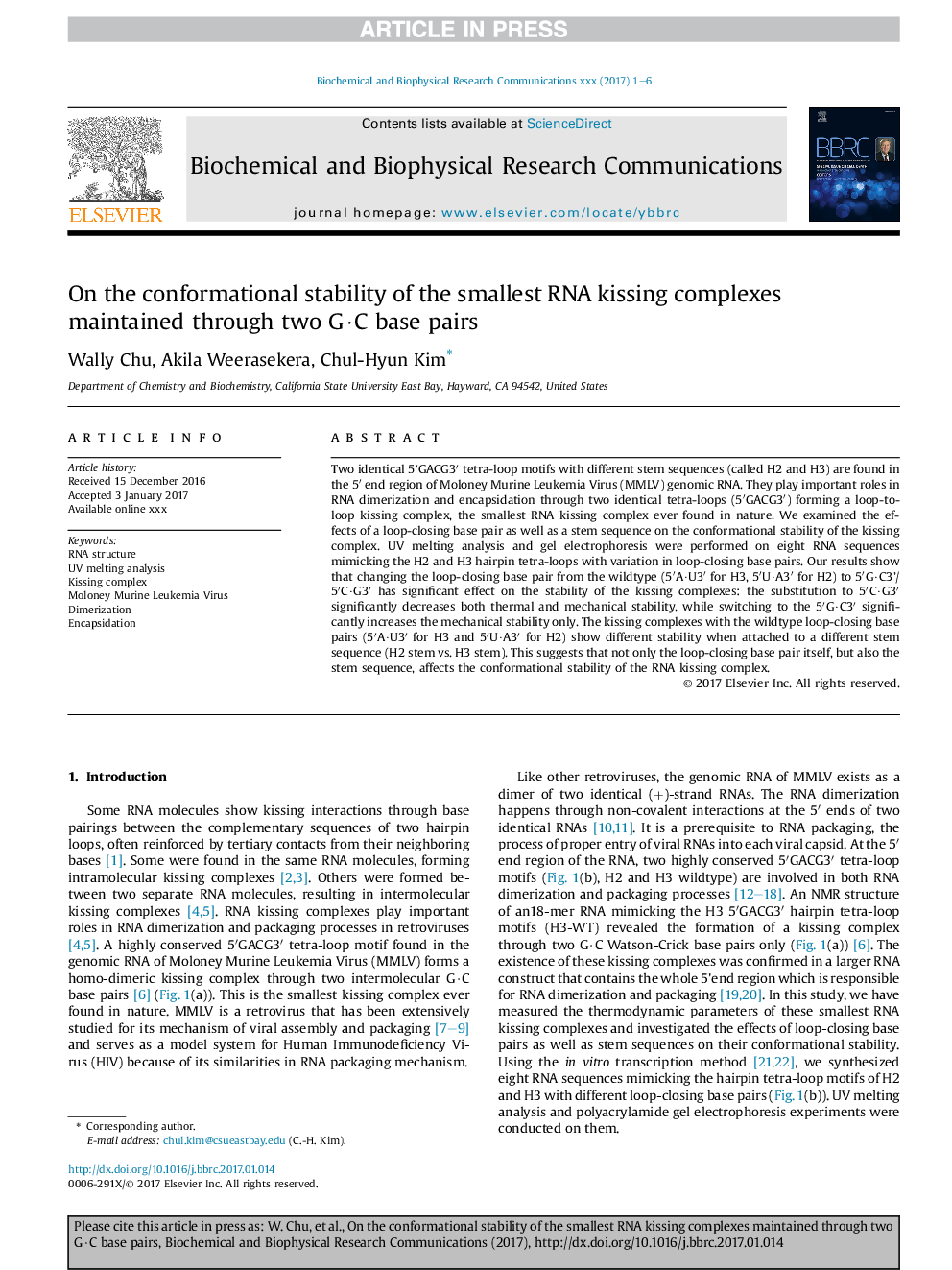| Article ID | Journal | Published Year | Pages | File Type |
|---|---|---|---|---|
| 5505552 | Biochemical and Biophysical Research Communications | 2017 | 6 Pages |
Abstract
Two identical 5â²GACG3â² tetra-loop motifs with different stem sequences (called H2 and H3) are found in the 5â² end region of Moloney Murine Leukemia Virus (MMLV) genomic RNA. They play important roles in RNA dimerization and encapsidation through two identical tetra-loops (5â²GACG3â²) forming a loop-to-loop kissing complex, the smallest RNA kissing complex ever found in nature. We examined the effects of a loop-closing base pair as well as a stem sequence on the conformational stability of the kissing complex. UV melting analysis and gel electrophoresis were performed on eight RNA sequences mimicking the H2 and H3 hairpin tetra-loops with variation in loop-closing base pairs. Our results show that changing the loop-closing base pair from the wildtype (5â²A·U3â² for H3, 5â²U·A3â² for H2) to 5â²G·C3'/5â²C·G3â² has significant effect on the stability of the kissing complexes: the substitution to 5â²C·G3â² significantly decreases both thermal and mechanical stability, while switching to the 5â²G·C3â² significantly increases the mechanical stability only. The kissing complexes with the wildtype loop-closing base pairs (5â²A·U3â² for H3 and 5â²U·A3â² for H2) show different stability when attached to a different stem sequence (H2 stem vs. H3 stem). This suggests that not only the loop-closing base pair itself, but also the stem sequence, affects the conformational stability of the RNA kissing complex.
Related Topics
Life Sciences
Biochemistry, Genetics and Molecular Biology
Biochemistry
Authors
Wally Chu, Akila Weerasekera, Chul-Hyun Kim,
